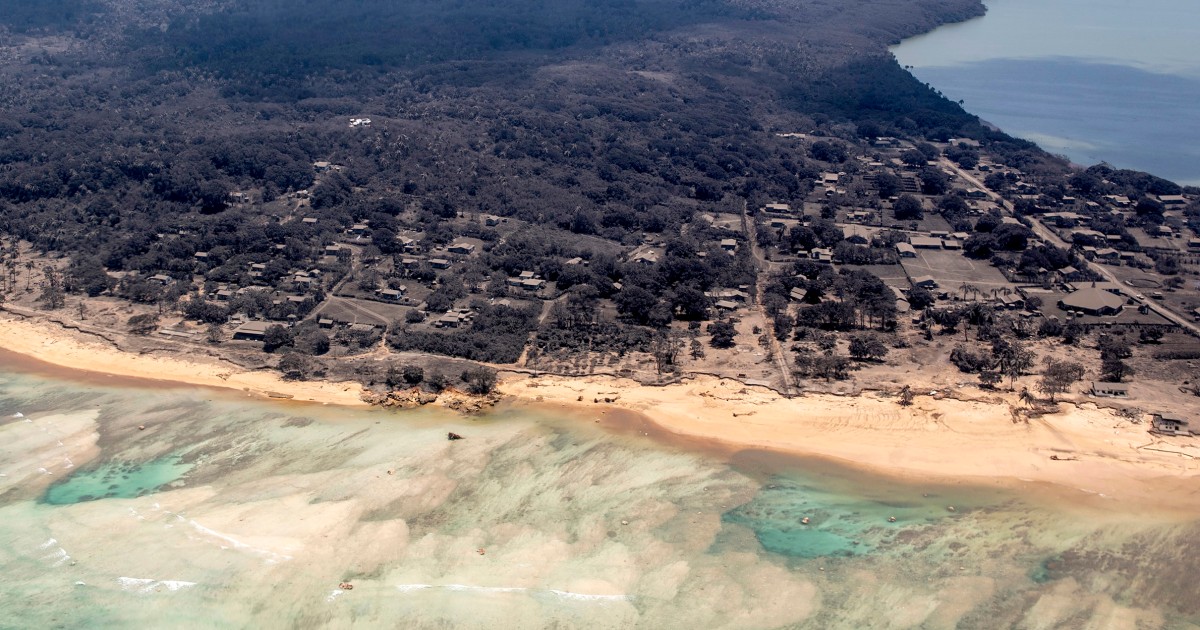
Tonga police told the New Zealand High Commission that the confirmed death toll on the islands stood at two. A British woman living in Tonga who ran an animal rescue center was swept away by the tsunami and became the first known victim on Monday.
“People panic, people run and get injuries. Possibly there will be more deaths and we just pray that is not the case,” Tonga’s deputy head of mission in Australia, Curtis Tu’ihalangingie, told Reuters.
Tongan officials were hoping to evacuate people from the isolated, low-lying Ha’apai islands group and other outer islands where conditions were “very tough, we understand, with many houses being destroyed in the tsunami,” Australia’s Minister for the Pacific Zed Seselja said, according to Reuters.
There was particular concern for residents of two small islands, Fonoi and Mango, where an active distress beacon had been detected, according to the U.N. disaster relief agency.
Tongan authorities have called for immediate assistance, including for fresh water and food, according to the U.N.
But while the island nation’s main international airport was not damaged in the eruption and tsunami, heavy ashfall prevented full operations and hindered international relief efforts.
In addition, the waterfront in the capital city of Nuku’alofa’s was seriously damaged with rocks and debris pushed inland by the tsunami, according to a report published by the U.N.’s humanitarian affairs agency.
Communications are also limited after the single underwater fiber-optic cable that connects Tonga to the rest of the world was severed in the eruption. Two cuts to the cable could not be fixed until volcanic activity ceased, allowing repair crews access, said Samiuela Fonua, the chair of Tonga Cable, according to Reuters.
Australia and New Zealand sent the first reconnaissance flights to survey the damage on Monday after a towering ash cloud prevented earlier flights.
The two countries have sent ships loaded with water and relief supplies to the archipelago made up of 171 islands, which has a population of nearly 106,000.
New Zealand’s ships won’t arrive for three days, according to the country’s defense minister. The country pledged an initial $680,000 toward recovery efforts and has also sent survey and diving teams to assess damage to the ports.
The U.S. international aid agency also said that it is working with partners to provide relief supplies and shelter for residents.
Chinese Foreign Ministry spokesperson Zhao Lijian on Tuesday said China is preparing to send drinking water, food, personal protective equipment and other supplies to Tonga as soon as flights resume.
Experts said the volcano, which last erupted in 2014, had been puffing away for about a month before rising magma, superheated to around 1,832 degrees Fahrenheit, met with 68-degree seawater, causing an instantaneous and massive explosion.
Associated Press and Reuters contributed.
Source: | This article originally belongs to Nbcnews.com









